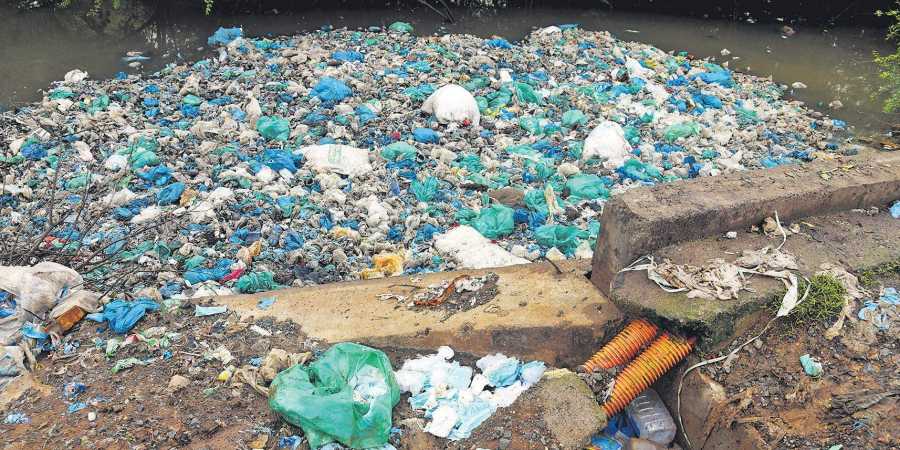Since the past 65 years, about 8.3 billion tons of plastics have been produced worldwide, which is equivalent to 10,000 Eiffel Towers or 35,000 Empire State Buildings. But only 9 percent of all plastics gets recycled, while the rest ends up as trash. About 8 million tons goes into the ocean every year and the figure could rise to 500 million tons by 2020. Plastic from medical wastes has an adverse effect on human health, marine life, and the environment, as it pollutes our soil and water.
Besides carbon dioxide, healthcare relies on several more potent greenhouse gases; operating theatres rely on the anaesthetic gases desflurane, sevoflurane and nitrous oxide, which are greenhouse gases. Only 5% of these gases enter a patient’s system during surgery – the rest is vented out as medical waste. These halogenated gases have the global warming potential up to 2,000 times greater than carbon dioxide. Researchers have suggested reducing emissions by using gas-capture technology that uses canisters to collect unused anaesthetics.
Given the health risks of air pollution, climate change and plastic waste, cleaning up healthcare could in fact turn out to be an opportunity to save many more lives. Such recycled plastics may have lower mechanical properties compared to virgin plastics, because each time you melt and process a plastic, the polymeric chains degrade. But these properties can be recovered by mixing it to additives or virgin plastic. Examples of successful industrial recycling include PET, or poly (ethylene terephthalate), which is used to make soft drinks bottles, and polystyrene.
All the rest can technically be reprocessed into new materials for different applications. In the final instance, any plastic waste can be shredded and used as filler for asphalt or be pyrolyzed – decomposed through heating – to produce fuel. The Japanese company Blest Corporation already sells a portable machine to convert domestic plastic waste into fuel in a simple, affordable way.
Flagging their concern at the recent International Plastic Bag Free Day, people resolved to eliminate plastic in their daily life. They asserted that the inventors of plastic should now devise ways to get rid of it. Suggestions raised at the meeting included managing plastic waste, and utilizing it in a technologically feasible, economically viable, eco-friendly, and socially acceptable manner. In fact, scientists, technologists, environmentalists, and engineers all over the world are researching and developing effective disposal and utilization of plastic waste, for example, in the construction of infrastructure projects.
One of the major achievements of converting plastic was to be converting into tiles. A Delhi-based CSIR-NPL has developed an eco-friendly and patented technology to manufacture tiles from plastic waste and medical wastes. It has signed a license with a private firm to manufacture tiles on a commercial scale. The firm plans to set up a recycling unit at an investment of Rs 3.2 crore; it will have the capacity to produce 5 lakh tiles per month. NPL will help fabricate waste plastic into 3-60 mm thick tiles with aesthetic designs that can be customized. The product has been tested for flammability, water absorption, and mechanical strength, as per the standards set by the American Society for Testing Materials.
Indian developers are looking to their counterparts in Mexico for transfer of technology for converting plastic waste and medical wastes for use in housing projects. The selected plastic waste is grinded into flakes, placed into a mold, and melted once it is in a plasma state. Pressure is then applied on it to produce the raw material for construction products. To create a wall, around 6 kgs of plastic waste is transformed. Houses built with this waste material cost less than those made of concrete. This material can resist 3.5 kg per sqm of load as compared to 2.5 kg per sqm load by traditional building materials.
In Australia’s Royal Melbourne Institute of Technology (RMIT), researchers have developed a building material made from cigarette butts mixed with plastic waste, medical wastes, bitumen, and paraffin wax. The material is finding application in laying roads etc and in construction as a good lightweight composite material. It is capable of handling heavy traffic load on roads and it reduces thermal conductivity.
In India, plastic waste has been successfully used for constructing over one lakh km of roads in 11 states. These road stretches are expected to last for more than 10 years, as claimed by the national rural road agencies. Plastic road surfacing in the country is becoming popular as it makes roads sturdier and more heat resistant. The advantage of using plastic waste is that the melting point of plastic roads is around 66 C, compared to 50 C of conventional roads. It is also more economical at 8-9% lesser cost than a conventional road.
Although some of these measures to convert waste into useful products may yet be baby steps but scaling up efforts will certainly encourage a more scientific and large-scale disposal of waste. For example, New Delhi Municipal Council and the East Delhi Municipal Corporation are in the process of setting up plants for waste management of non-biodegradable materials like plastic, medical waste. FMCG companies across the country are working on alternatives to reduce use of plastic due to mounting concerns over plastic waste and ban on plastic carry bags in many states. Although the Government has been trying to plug a ‘leaky’ system that allows rampant use of shoddy materials, the need of the hour is also a social awakening to induce behavioural changes in consumers.
There is also an urgent need to expand the development and application scope of recycled/retreated waste by evaluating the intrinsic potential of all kinds of waste, including the prospect of large-scale utilization, preceded by a preparation of relevant codes of use and practices for different applications.
The government has pledged to make our country free of plastic waste and medical waste by 2022 and we should equip ourselves technologically and socially to redeem this pledge – right away.

3 Comments